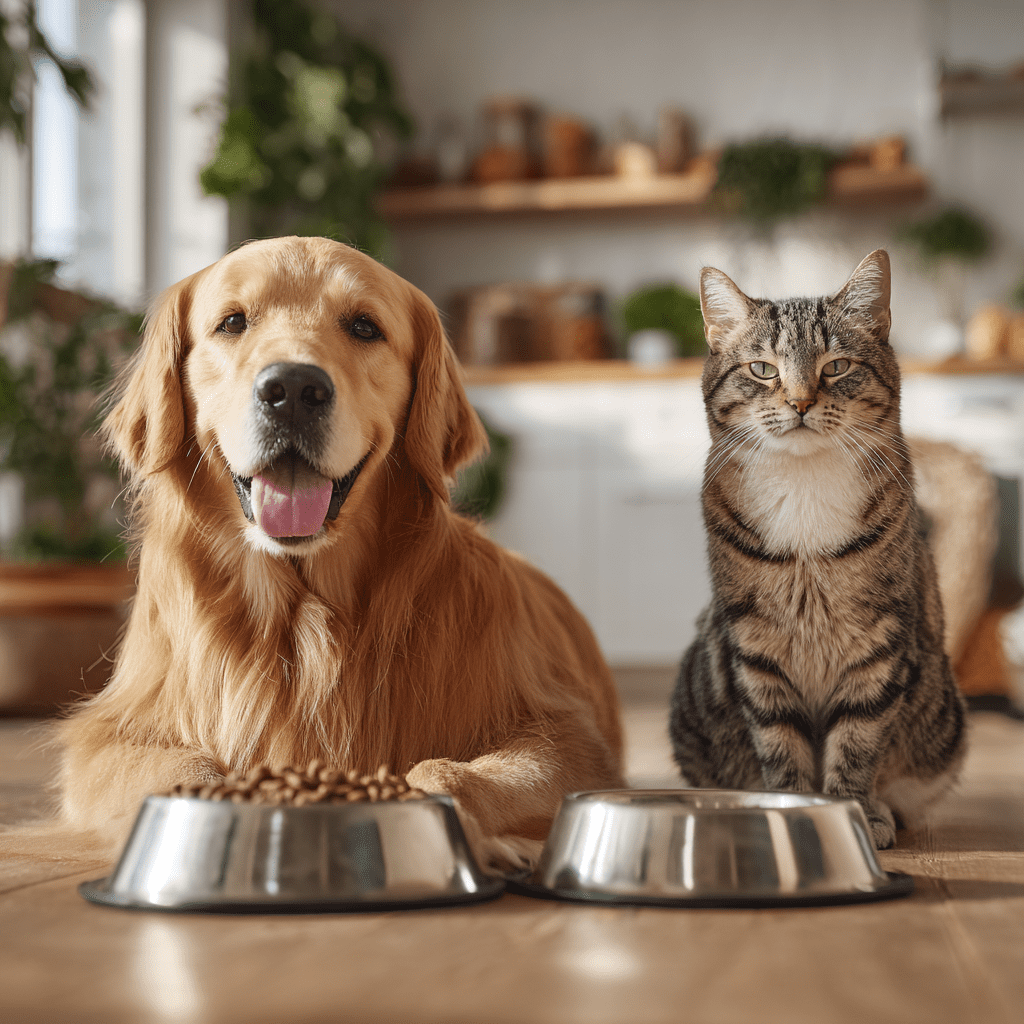Introduction: Why Diet Changes Matter
Changing your pet’s food may seem simple, but for dogs and cats, a sudden switch can lead to stomach upset, diarrhea, or refusal to eat. Pets thrive on consistency, and their digestive systems need time to adjust to new ingredients and textures.
Whether you’re moving your pet to a healthier diet, addressing allergies, or adjusting for age-related needs, the key to success is a gradual and thoughtful transition.
In this guide, we’ll explore when and why to change your pet’s diet, how to do it step by step, common mistakes to avoid, and how to ensure your furry companion thrives during the process.
When Should You Consider Changing Your Pet’s Diet?
There are several reasons a diet change may be needed:
- Life Stage Changes
- Puppies and kittens need nutrient-rich food for growth.
- Adults need maintenance diets.
- Seniors often require food that supports joint health and digestion.
- Health Issues
- Allergies, obesity, diabetes, or kidney disease may require prescription diets.
- Food sensitivities to proteins like chicken, beef, or grains may cause skin or digestive issues.
- Weight Management
- Overweight pets may benefit from a low-calorie or high-protein diet.
- Owner Choices
- Transitioning to raw, homemade, or grain-free diets.
- Choosing more sustainable or natural pet foods.
The Risks of Sudden Food Changes
Switching food abruptly can cause:
- Vomiting
- Diarrhea
- Loss of appetite
- Gas and bloating
- Stress or refusal to eat
That’s why vets always recommend transitioning food gradually over 7–10 days.
Step-by-Step Guide to Transitioning Your Pet’s Diet

Step 1: Consult Your Veterinarian
Before making a change, discuss it with your vet. They’ll recommend foods that fit your pet’s age, weight, breed, and health conditions.
Step 2: Start Slowly
Mix the new food with the old food, gradually increasing the proportion of new food:
- Days 1–2: 75% old food, 25% new food
- Days 3–4: 50% old food, 50% new food
- Days 5–6: 25% old food, 75% new food
- Day 7+: 100% new food
If your pet has a sensitive stomach, extend this process to 2–3 weeks.
Step 3: Watch for Signs of Trouble
Monitor your pet’s stool, appetite, and energy levels. Soft stool for a day or two is normal, but persistent diarrhea, vomiting, or refusal to eat means you should slow down the transition.
Step 4: Provide Fresh Water
Always ensure your pet has access to clean, fresh water, especially when introducing new dry food or diets higher in protein.
Step 5: Add Digestive Support (Optional)
- Probiotics can help maintain gut balance.
- Pumpkin (plain, canned) can ease mild stomach upset in dogs and cats.
Tips for Dogs vs. Cats
Dogs
- Dogs are usually more flexible eaters, but sensitive stomachs are common.
- Adding warm water or a little low-sodium broth can encourage picky dogs.
Cats
- Cats are creatures of habit and may resist new food strongly.
- Try mixing in small amounts of new food with strong-smelling favorites like tuna.
- Patience is key—cats may take 2–3 weeks to fully accept a new diet.
Common Mistakes to Avoid
- Switching too fast – causes stomach upset.
- Not measuring food – new food may have different calorie content.
- Ignoring hydration – especially with dry food diets.
- Forcing the transition – can make pets refuse the new food completely.
- Skipping veterinary advice – especially for pets with health issues.
Signs of a Successful Transition
- Healthy appetite
- Firm, consistent stool
- Steady energy levels
- Improved coat and skin health
- No vomiting or digestive issues
Real-Life Story: Bella the Labrador
Bella, a 6-year-old Labrador, was overweight and sluggish. Her vet recommended switching to a high-protein, weight-management diet. Her owner followed a slow, three-week transition plan, added daily walks, and monitored portion sizes.
Within three months, Bella lost weight, regained her energy, and her coat looked shinier than ever. This success story shows how the right food—and the right transition—can transform a pet’s health.
What If Your Pet Refuses the New Food?
- Try warming the food to enhance smell.
- Mix in a little wet food, broth, or favorite treat.
- For cats, sprinkle a bit of tuna juice or powdered freeze-dried meat topper.
- If refusal continues beyond a few days, consult your vet.
Special Situations
Transitioning Puppies and Kittens
- Switch to adult food around 12 months (large breeds at 18 months).
- Make the change gradually to avoid upsetting delicate tummies.
Transitioning Senior Pets
- Older pets may need diets lower in calories but higher in fiber and joint-supporting nutrients.
- Transition slowly to avoid stressing older digestive systems.
Transitioning Rescue Pets
- Newly adopted pets may already be stressed, so keep them on their old food for 1–2 weeks before slowly transitioning.
Long-Term Benefits of the Right Diet
- Better digestion and fewer stomach upsets
- Shinier coat and healthier skin
- Stronger immune system
- Improved energy and vitality
- Longer, healthier lifespan
Conclusion: Patience is the Secret Ingredient
Transitioning your pet to a new diet safely isn’t about rushing—it’s about patience, consistency, and observation. A careful, gradual change ensures your pet’s stomach adjusts, their taste preferences adapt, and their health improves without stress.
Remember: every pet is unique. Listen to your vet, pay attention to your pet’s signals, and take it one meal at a time. The reward will be a healthier, happier companion who thrives on their new nutrition.
